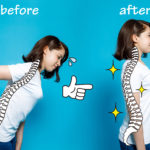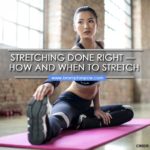Health Blog
Using A Cane Or Walker Can Help Improve Your Balance & Mobility

Falls are the leading cause of non–fatal injuries in older adults, and the likelihood of falling increases each year as various health conditions become more common. One in three adults over the age of 65 and one in two adults over 85 will fall at least once each year, and every 11 seconds an older adult is treated in the ER for a fall. About 20–30% of falls cause moderate to severe injuries that have a significant impact on one’s functional mobility and independence, with hip fractures being the most common complication.
These facts may be daunting, but you shouldn’t allow your fear of falling to dominate your life or prevent you from getting around. Instead, you can take control of your situation by making changes in your life that will keep you strong and stable, thereby reducing your risk of falling in the process.
If you have any difficulty with movement, one positive change you can make to your daily life is to start using a walking aid like a cane or walker. Doing so will improve your mobility, balance, and confidence, which will effectively reduce your risk for falling. Walking aids are also extremely helpful for patients dealing with painful conditions like knee or hip osteoarthritis, degenerative movement disorders like Parkinson’s disease or Huntington’s disease, and those recovering a traumatic injury or surgery.
Determining whether a walker or cane is right for you
You should talk to your doctor or physical therapist about whether you need a walking aid and which type is best for you, but it’s helpful to know that walkers are the more supportive walking aid of the two options. Walkers can support up to half your bodyweight and are also helpful for preventing hip and joint pain if it occurs on both sides of the body. A front–wheeled walker, which has two wheels, is most common and best suited for those with poor balance. Three–wheeled walkers are ideal for smaller living quarters but require the user to have more balance, while four–wheeled walkers have better mobility over uneven surfaces and are recommended for those with decent balance and mobility who only need minimal assistance.
Canes are recommended for adults who only need a walking aid on one side of the body and not as much support as a walker. Canes can support up to 25% of one’s bodyweight and are ideal for when older adults first start to notice balance or mobility issues. As with walkers, there are several types of canes to choose from. A quad–based cane provides the most support and stability but is also heavier and slightly more difficult to maneuver. A standard single–base cane provides less stability but is easier to navigate and may therefore be adequate for those with only minor balance issues.
Tips on how to safely use a walker or cane
To ensure that you’re using a walker or cane as safely as possible to reap the full benefits, here are some tips for both walking aids:
Walkers
- The top of your walker should be at the level of your wrist when you’re standing with your arms relaxed at your side
- When using a front–wheeled walker, be sure to keep the front of your body in line with the back two posts of the walker; advance the walker a few inches in front of you first, and make sure all tips and wheels are touching the ground before taking a step
- When you’re ready to take a step, step forward with your bad leg first, followed by your good leg, placing it in front of your lead foot
- Don’t lift the walker off the ground while turning
Canes
- The top of your cane should also be at the level of your wrist when you’re standing with your arms relaxed at your side
- Always hold your cane with the top of the handle at your wrist in the hand opposite of the painful side
- Keep your elbow slightly bent whenever using your cane
- Move the cane forward at the same time as the leg that is painful or weak
- When walking up stairs, your good leg should go up first, followed by the weak leg and cane; when walking down stairs, the weak leg and cane should go first, followed by your good leg
- One easy way to remember this is the phrase, “Up with the good, down with the bad”
Ensuring that you’re using safe techniques when transferring or walking with an assistive device will significantly improve your mobility and significantly mitigate your risk for falling as you go about your day. Physical therapists can also take this pra step further by training you in the proper use of these devices and designing a personalized fall–prevention program for high–risk patients. Contact us if you’re interested in learning more about walking aids.
December 13, 2022
Back to Health BlogHEALTH BLOG
- A Personalized Physical Therapy Program Can Assist with Whiplash
- Why Older Adults Should Incorporate an Exercise Program
- After an Achilles Injury, Physical Therapists Can Help with Recovery
- AI Can Answer Questions But It’s Best to See a Physical Therapist
- Physical Therapy Can Help With Symptoms of Wryneck
- Reduce the Risk of Pickleball Fractures By Taking Proper Precautions
- Physical Activity May Slow the Progression of Parkinson's Disease
- Too Much Salt in Your Diet? Learn the Dangers of High Sodium Intake
- Suffer From Lower Back Pain? Might Be Time to Take A Break
- The Road to Recovery: Preventing Re-Injury After ACL Surgery
RECENT ARTICLES

- 11 Possible Reasons Your Back HurtsJune 22, 2020

- What Conditions Can a Chiropractor Treat?May 25, 2020

- A Simple Guide to Better PostureApril 30, 2020

- Is Acupuncture Right for Me When I’m Afraid of Needles?March 30, 2020

- Stretching Done Right — How and When to StretchFebruary 26, 2020

